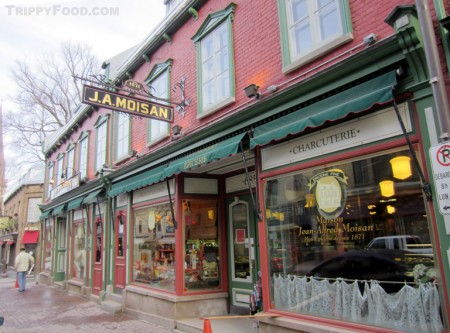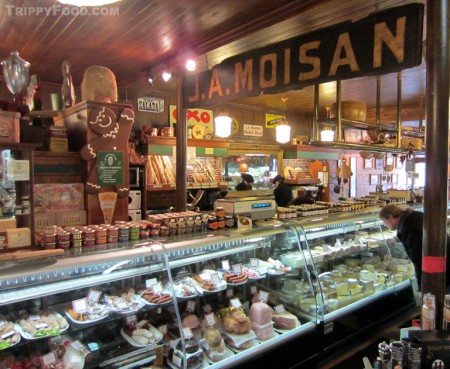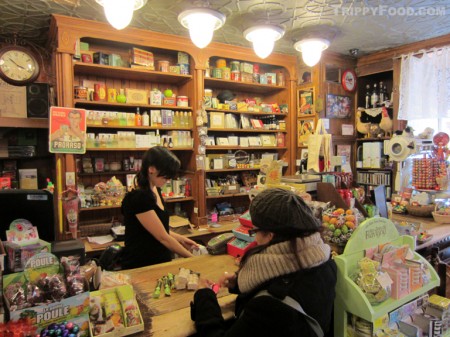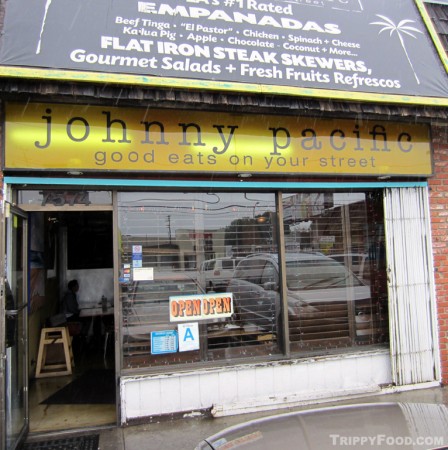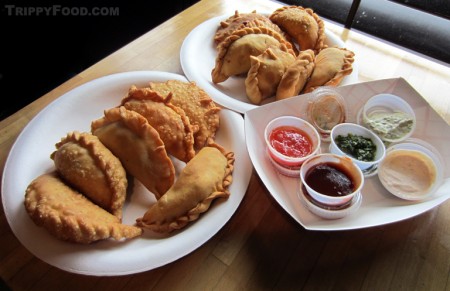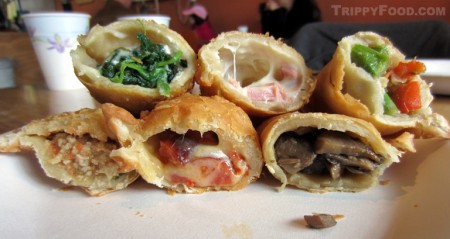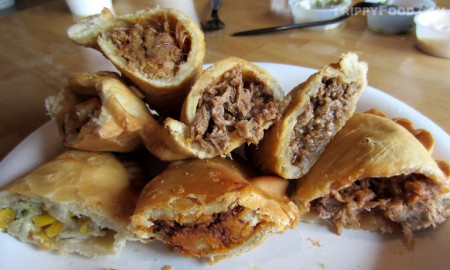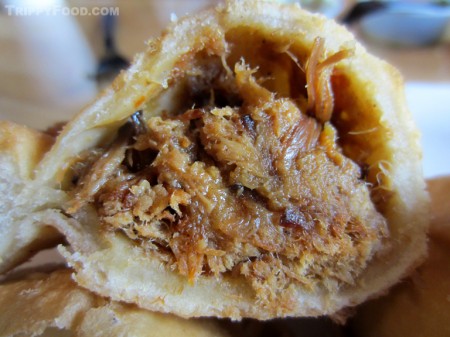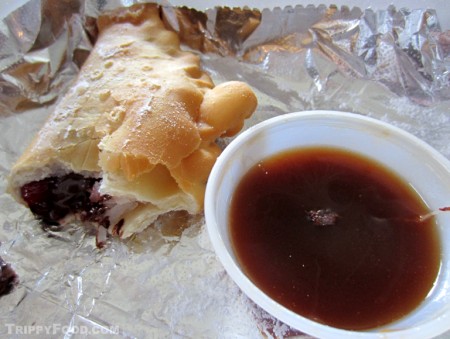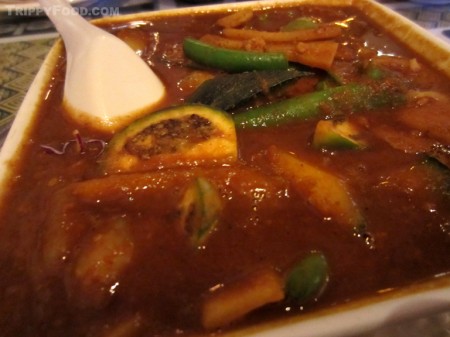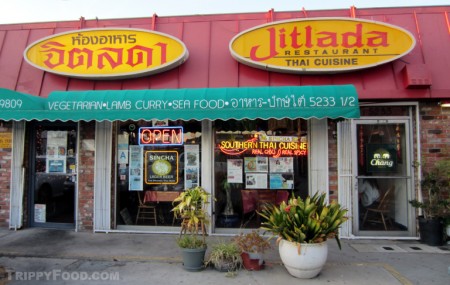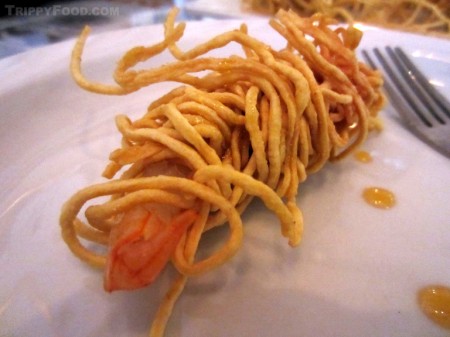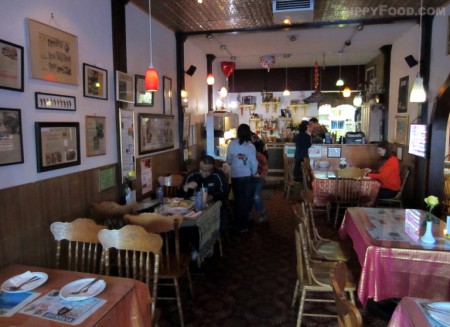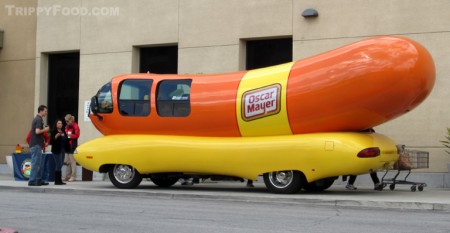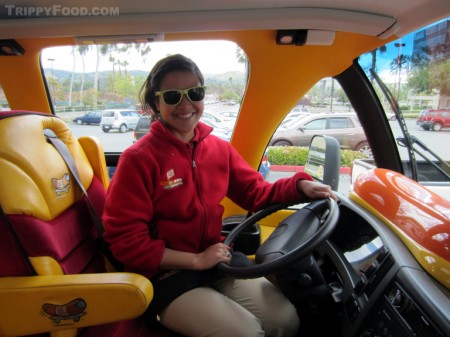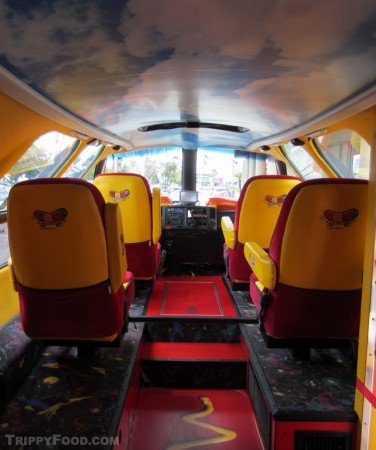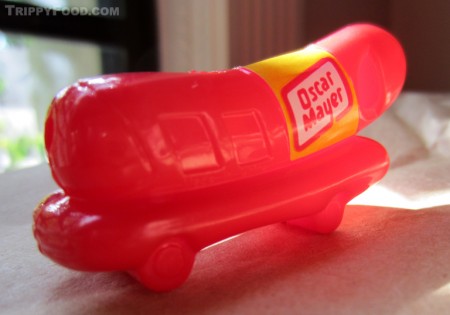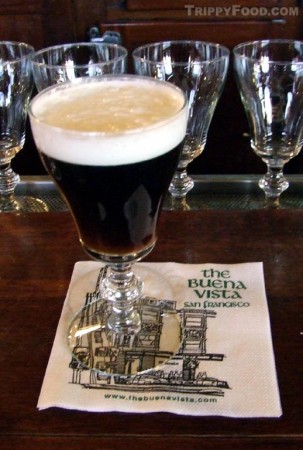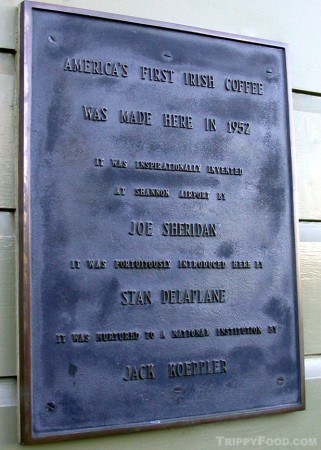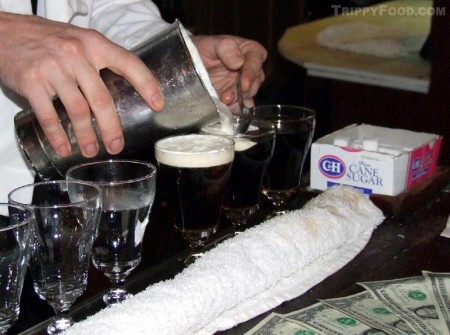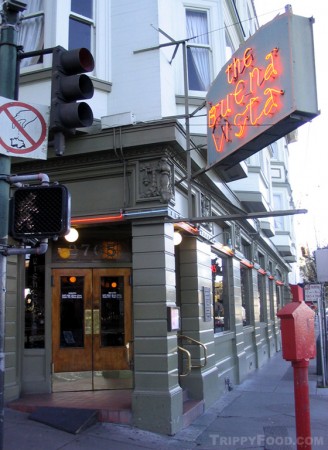Épicerie Jean-Alfred Moisan
Oldest grocery store in North America
Épicerie J. A. Moisan is a historic grocery store hidden in plain sight in a row of trendy shops and eateries on rue Saint-Jean in Québec City’s Upper Town. Before A&Ps grocer apron was even a bib, Jean-Alfred Moisan was selling imported and high-end foodstuffs and alcoholic beverages to the wealthy citizens of Québec from the red brick storefront he opened in 1871. The store was passed through several generations of the Moisan clan until it was sold off in 1978; it changed hands again permanently in 1999. The building itself dates back several centuries, having been renovated in the latter part of the last one to restore and retain the magic of a day gone by.
A black wooden sign with gold leaf lettering hangs above the portal to yesteryear; there’s no garish neon or back-lit plastic to detract from the sensation of visiting Monsieur Moisan to inquire what epicurean comestibles have arrived from the four corners of the earth for your culinary enjoyment. What appears to be the original storefront sign hangs from the wood-paneled ceiling in the middle of the room that hosts the charcuterie; chapeau-topped staff man the slicers and scales behind the meat cases, preparing and packaging your selections. Prepare to feel like a kid in a candy store (or at least a carnivore in a butcher shop) – the glass cases are your window to a magical world populated with exotic sausages, cured hams, salami, pâtés and luncheon meats. Across the wooden floor, a refrigerated case holds a dizzying array of cheeses appropriate for virtually any gastronomic application (don’t feel like slicing your own raclette cheese? J. A. Moisan has you covered).
The back of the store is lined with shelves and refrigerators (obviously modern conveniences) brimming with local and imported beer and wine (you can even get absinthe if you know where to look); a wooden island in the middle of the area is stocked with olive oils and marinades. Around the store, glass display cases hold items that haven’t been available for decades making J. A. Moisan part grocery, part museum. In one corner, a faded 8×10 photo of Joan Crawford hangs autographed with a word of thanks for supplying her with cosmetics.
Everything you would expect to find at a full service grocery is here; the left side of the store features an alcove with bins, canisters and hoppers filled with teas and coffees from around the world. Offset shelves form an obstacle course through which you gain extra points filling your basket with crackers, cookies, biscuits, candies, licorice, chocolates, baked goods, preserves, pickles, sauces, and food items that are limited only by your imagination. While shopping, it’s easy to forget what century is whizzing past on the avenue on the other side of the lace-curtained windows. Although the store isn’t very large, you can easily find yourself lost for hours; it’s often difficult to tell what is an artifact and what is for sale. You’ll be pleased to know that the rather exotic and fancy cans and boxes in the sealed glass cabinet holding truffles and foie gras are for sale.
All fixtures (except the refrigerated cases) in the store are befitting of the establishment’s proud lineage; globe lights and ceiling fans hang from silver tin ceilings; shelving, furniture and glass cases all appear to be antique mahogany; counter-tops are lavishly finished in marble. If you decide that you are unable to resist the temptation of consuming your purchases before you get back to your hotel or place of residence, J. A. Moisan has provided marble-topped cafe tables and chairs in an alcove where you can shamelessly devour the spoils of your shopping foray beneath the stuffed and mounted tarpon that sadly is inedible.
The city of Québec itself is a quaint and magical place, evoking the charm of European antiquity, and Épicerie Jean-Alfred Moisan is a small yet precious jewel in the treasure chest of the city’s rich and illustrious history. I wouldn’t be surprised if your purchases are placed in a plastic bag as a way to slowly re-acclimatize you to the 21st century as you venture back out into the street.
Épicerie Jean-Alfred Moisan
699, rue Saint-Jean
Québec, QC G1R 1P7
GPS Coordinates: 46°48’37.68″N 71°13’8.04″W

